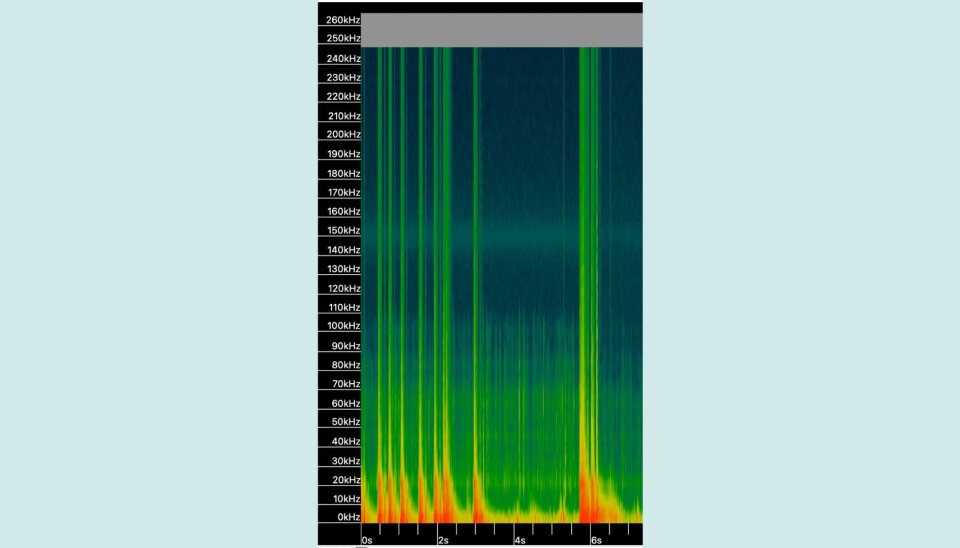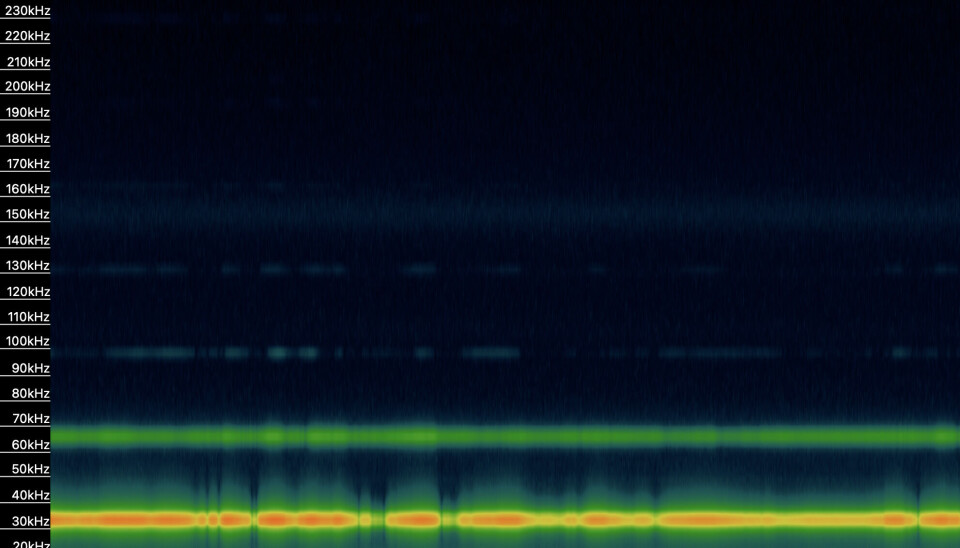Researchers' Zone:

The environmental impact of ultrasound
We dream of green cities rich in biodiversity. But are we chasing animals away and discouraging plant growth with increasing urban ultrasound?
The accepted frequency range of human hearing is 20Hz to 20kHz.
If you are musical, think of it this way: the lowest note on a standard piano is A0 which has a frequency of just over 27Hz, the highest note, C8 has a frequency of just under 4.2kHz. The note D10# is just below 20kHz.
However, most of you reading this will have a reduced hearing range particularly in the upper end.
This is a result of aging and, often, a risky lifestyle such as our fondness for listening to loud music especially through earphones or in live music venues.
Nevertheless, this range forms a part of the American National Standards Institute (ANSI) definition of sound, and so a sound is defined as a sound wave that is audible to humans because it lies within this frequency range.
Some creatures, such as elephants, can hear below 20Hz (defined by ANSI as infrasound), and many, if not most, creatures can hear above 20kHz (defined by ANSI as ultrasound).
While there are negative consequences to human health from ultrasound (see Fact box below article), what I am interested in is the impact of human ultrasound production on non-human species and how this ultrasound pollution potentially disrupts our efforts to green urban areas.
In this article, I will first illustrate the importance of ultrasound as a means of communication for many animals and plants and then discuss the increasing prevalence of human-produced ultrasound.
Ultrasound and animals
Here are just some examples of how some common creatures make use of ultrasound as a form of communication and to sense the world around them.
Our pet dogs can hear up to c.45kHz and cats can hear up to c.85kHz.
There are many species that are not only sensitive to ultrasound but can produce ultrasound themselves.
Of course, bats are rather famous for this (some species produce ultrasound beyond 200kHz), but rats too can sense and vocalize up to 50kHz and mice sing love songs to each other at frequencies up to 125kHz.
And just to take a few urban examples from the insect world, butterflies and moths of the order Lepidotera can sense ultrasound (all the better to avoid those echo-locating bats!).
Crickets (order Orthoptera, suborder Ensifera) produce and sense ultrasound up to c.150kHz.
Ultrasound and plants
Some authors have long known about plants' use of sound.
Take Roald Dahl's short story ‘The Sound Machine’ from 1949 about a man who invents a device that can record ultrasounds emitted by plants and who is driven mad by their screams as they are cut down, pruned, or harvested for their flowers.
Scientists have been a little behind the curve on this but are beginning now to gather early evidence that some species of plants do indeed communicate with ultrasound.
This is not necessarily surprising as specialized auditory organs (the ear, for example) are not required for the sensing of sound waves—anyone with experience of sub-bass can attest to this. Indeed, as the deaf percussionist Evelyn Glennie has stated:
»Hearing is basically a specialized form of touch«.
Ultrasound and humans
Ultrasound is an unavoidable component of almost any sound wave we produce, from our voices to our music to the finely tuned F1 racing car.
The complex waveforms so produced comprise multiple, simple sinewaves, or overtones, increasing in frequency above a fundamental.
Our perception of timbre—why a piano sounds like a piano and not a trumpet—is mainly due to these overtones, but they cannot be heard (by us) above a certain frequency.
That is because of our auditory system (that 20kHz limit) and because they rapidly decrease in amplitude with increasing frequency.
Human production of ultrasound
We increasingly and deliberately produce and utilize ultrasound at high amplitudes for a variety of purposes.
These include, to name just a few, industrial applications such as cleansing, emulsifying, flaw detection in pipes and building materials, pest controllers and dog whistles, rangefinders (such as those used by cameras), and motion sensors.
It is also used in medical applications such as for the treatment of kidney stones and certain neurological conditions and for the scanning of foetuses.
Breaking the scale
Another example that I have documented myself is of a more festive nature.
We humans like to celebrate important events with loud noise but tend to be unaware of the ultrasound components of such noise.
The figures below show the presence of human-audible sound and ultrasound in the environment during the 2022/2023 New Year in Copenhagen.
An increase in intensity of the ultrasound is shown by a change in colour from light green through to yellow then orange and red.
The first figure below shows what can only be called an oppressive miasma of ultrasound enveloping Copenhagen during the Tivoli fireworks display (recorded from approximately 9km. distance).
Under normal conditions, and away from heavy traffic, it would be unusual to record significant levels above 20kHz. Of course, were I closer than 9km, the levels would be even higher.
The second figure below is of fireworks in the near neighbourhood of Hellerup a short while later.
As can be seen, the ultrasound frequency goes beyond 250kHz and what my equipment is capable of recording.
One can only wander how these high frequencies may affect both animals and plants….


Increased presence of human-produced ultrasound
It can be very illuminating and a little alarming to wander around a typical work or domestic environment with an ultrasound microphone in hand.
There are some surprisingly high levels of ultrasound production from quite common devices which we are normally quite unaware of.
The figure below shows the ultrasound produced by a motion sensor in my office, placed about 2 meters above where I sit.
The sound pressure level of the ultrasound band centred on 32kHz and measured at 1 meter distance is over 81dB.
In human-audible terms, such a sound pressure level is typically equated with heavy traffic or a lawnmower.

Ultrasound and urban greening
From the above, a basic hypothesis might be that the increasing human production of ultrasound disrupts the communication channels of many other species and this has a negative environmental impact.
Some of these are the species (plants, insects, and so on) that we wish to introduce to our urban areas in order to make them more habitable for us.
It makes sense to ensure that this urban greening succeeds by also making the city habitable for these species too.
And so, anything that might counteract this, should be investigated and this includes ultrasound.
New study investigates ultrasound in Aalborg
A proper study of ultrasound as a likely urban pollutant, then, must begin with a census of ultrasound sources in our urban areas.
My colleague Brian Bemman and I have recently made a modest start on investigating this with a pilot study on the levels and prevalence of ultrasound in the Aalborg city centre.
There is a lot more to be done but the results from this initial study indicate ultrasound sources in the city centre that appear to be correlated with human activity (such as traffic).
Equally, the level of ultrasound in Aalborg is considerably higher than a comparison measurement in a rural location.
On the basis of this, we intend to expand the pilot study, taking in other sites across Aalborg and similar urban centres while also attempting to identify the ultrasound sources.
At the same time, we are compiling a data set of ultrasonic signatures of a range of electronic devices.
These will be used to train a machine-learning algorithm in order to automate the identification of ultrasound sources in any location.
Is ultrasound disrupting our visions of green cities?
Ultrasound cannot be heard by humans but is widely produced and sensed by many other creatures and even plants.
These species use ultrasound as a means of communication and as a means to sense the world around them.
Humans are producing an increasing amount of ultrasound either as a by-product of intense human activity (e.g., traffic) or deliberately for a specific purpose (e.g. motion sensors).
This leads to the interesting question: is this production of ultrasound interfering with other species' communication channels and so disrupting attempts to green our cities?
Look again at the two images of the new year's eve fireworks: who would want to be a bat, an insect, or even a pet dog during this time?





